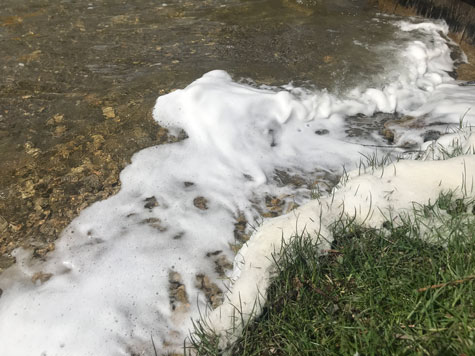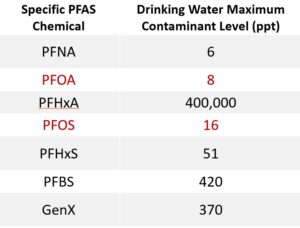
Michigan is set to enact new PFAS drinking water standards (known as Maximum Contaminant Levels or MCLs) after rules setting limits on seven PFAS chemicals made it past a final legislative hurdle on Wednesday, July 22nd. These new standards provide much needed protections for Michigan residents from the chemicals that are widely used and take a very long time to break down in the environment, earning them the nickname “forever chemicals.” The state has found PFAS at some level in public water supplies serving about 1.9 million Michiganders.
The rules will go into effect on August 3rd and are comparable to what other states have recently put in place. In some ways, Michigan’s rules are more protective, in other ways, they leave some deficiencies unresolved, but they are undoubtedly a vast improvement from the absence of any existing regulatory protection.

The new rules apply to public drinking water providers, like drinking water plants, and limit the levels of seven PFAS chemicals that can be present. Until now, there was no federal or state regulation protecting Michigan residents from PFAS in drinking water. There is still no immediate way to simply “shut down” a polluter, and until now, the only safeguards in place were reactive and applied to what was being dumped in the environment from wastewater treatment plants after pollution was discovered. State law requires polluters be given a chance to work with treatment plants and state officials to reduce their pollution. That lack of aggressive enforcement creates gaps and delays in protection. By the time PFAS are discovered in drinking water, the only option is to treat drinking water before it gets to customers’ taps.
Implications for the Huron and Michiganders
The rules will provide needed protections across the state. In the Huron River watershed no public water supplier should be affected as all tested PFAS levels are below the limits required by the new drinking water standards. Almost all public water sources in the watershed contain no detectable PFAS. Ann Arbor, which previously detected PFAS chemicals in its drinking water, has proactively treated its water down to nearly undetectable levels for more than a year, and the city has become an example for others nationwide on how to effectively treat drinking water for PFAS.
What’s also beneficial about the new rules for Michigan residents is that the tougher drinking water standards will replace the few PFAS environmental cleanup standards currently on the books. The old limits, which were based on non-enforceable federal guidelines, were widely regarded by experts as being not nearly protective enough for human health and the environment. That tougher cleanup standard may affect a few known contaminated sites in the Huron River watershed, and it’s certainly welcome protection if any new sites are discovered in the future.
From a regulatory policy perspective, the standards are novel because they represent Michigan’s first regulations ever on pollution in drinking water without adopting federal guidelines or standards set by the EPA. HRWC and many environmental groups, along with public health experts, have criticized the EPA’s lack of leadership under the Trump administration. In the best case scenario following the administration’s current plan, it will still be several years before there are federal drinking water standards for PFAS, if ever. That made it essential for Michigan and other states to take action themselves.
The regulations will not affect households with private wells. The state has no authority to require that homeowners test their own water. State officials do however, attempt to gain permission for testing in private well in areas where groundwater contamination is suspected.
Broad Support for First Steps to Address PFAS Pollution
Few issues bring Michigan voters together like the need for clean drinking water, and support for the new drinking water standards was generally bipartisan. Governor Snyder, a republican, initiated protections and monitoring for PFAS. Governor Whitmer, a democrat, made the issue a priority and directed the state to draft new drinking water standards. The only vocal source of opposition to the new rules came from the Michigan Manufacturers Association (MMA), the group that represents the vast majority of PFAS polluters in the state.
While imperfect, Michigan’s new PFAS drinking water standards provide a much greater level of protection for Michigan residents. They represent the culmination of devoted environmental advocacy, awareness and demand by Michiganders, and an unprecedented monitoring and assessment effort by state agencies to understand the scope of PFAS contamination in Michigan. It’s shameful that polluters were allowed to hide the toxic effects of these chemicals for so long, but these new PFAS regulations are an excellent first step toward protecting people and the environment from forever chemicals. Michiganders should be proud of them.



